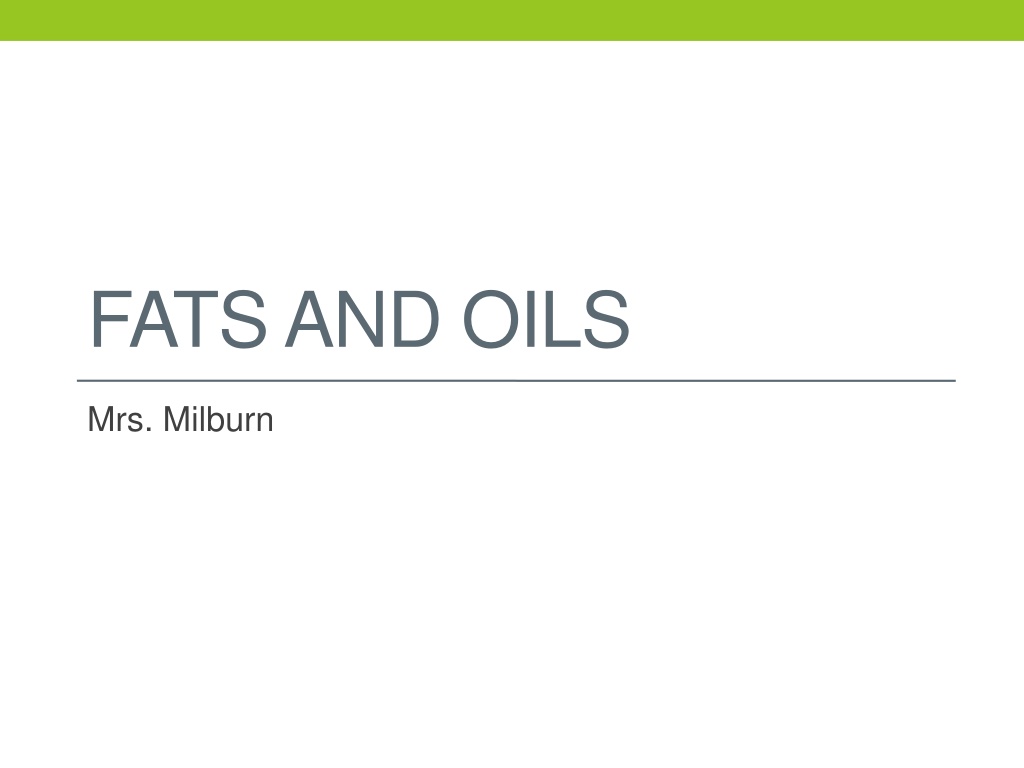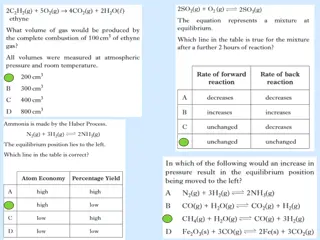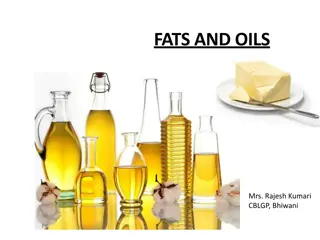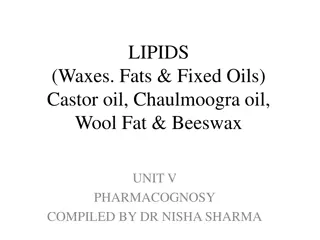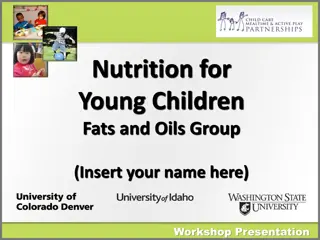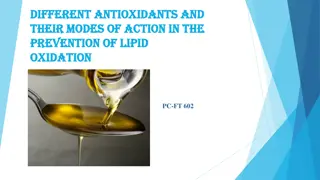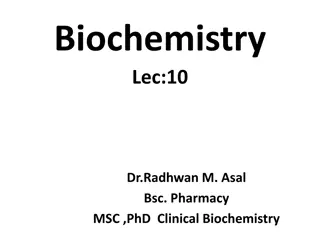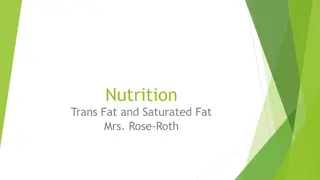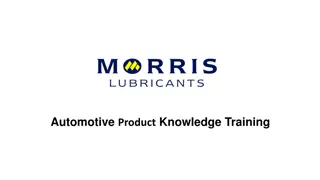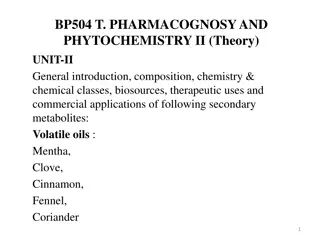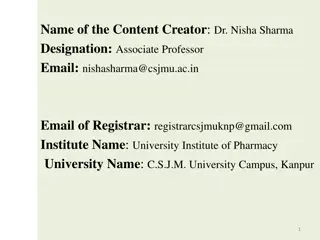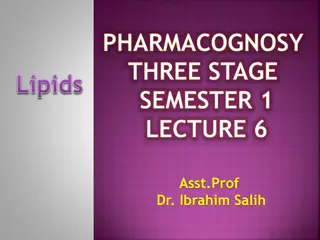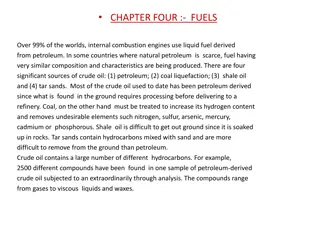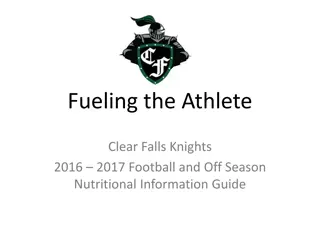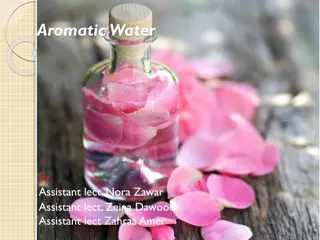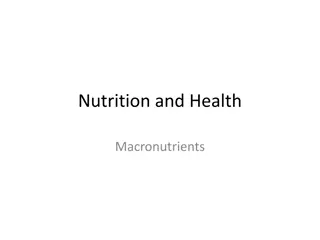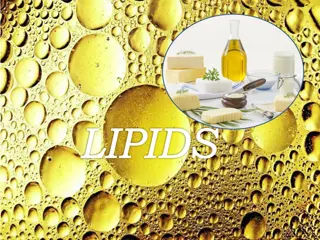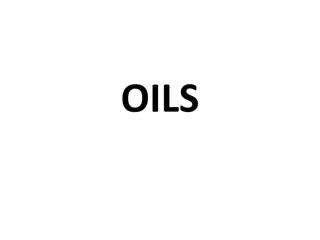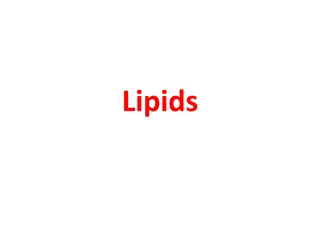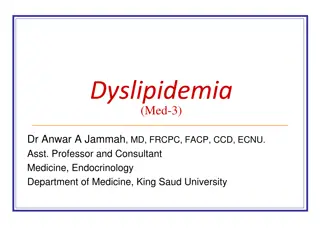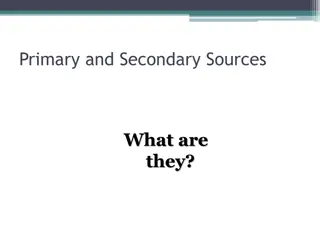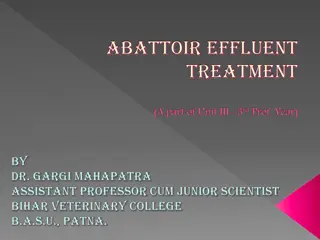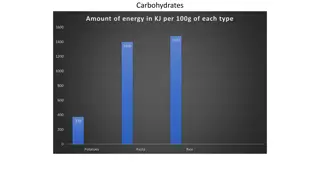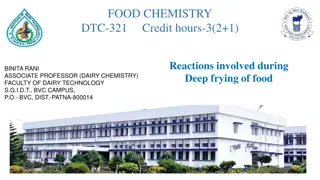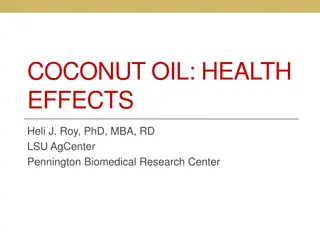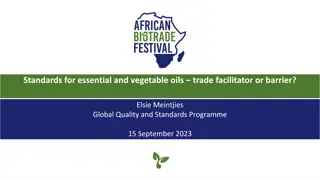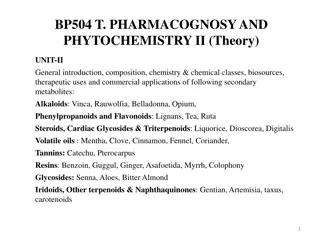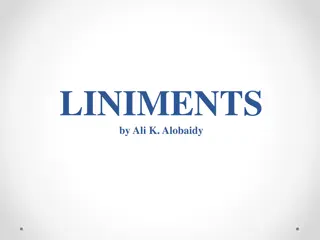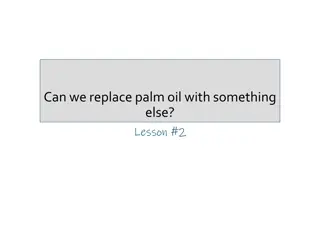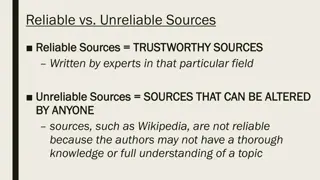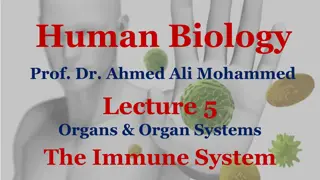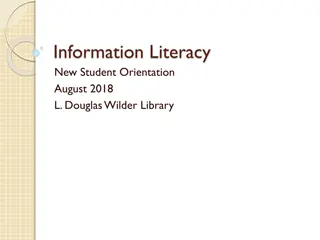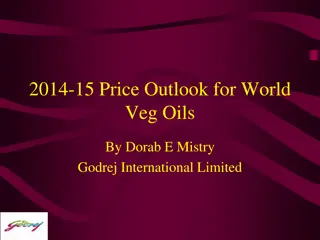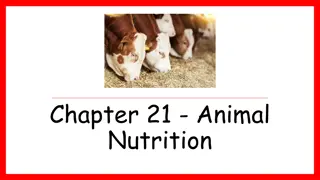Understanding Fats and Oils: Functions, Sources, and Benefits
Fats and oils play vital roles in the body, providing energy, insulation, protection, and promoting healthy skin. They are essential nutrients that offer 9 calories per gram and come from various plant and fish sources. Fat-soluble vitamins A, D, E, and K can only dissolve in fat, emphasizing the importance of consuming fats for optimal nutrient absorption. Additionally, fatty acids form the chemical chains of fats, contributing to their diverse functions like supplying heat, carrying essential vitamins, adding flavor to food, and satisfying hunger. Explore the significance of fats and oils for overall health and well-being.
Download Presentation

Please find below an Image/Link to download the presentation.
The content on the website is provided AS IS for your information and personal use only. It may not be sold, licensed, or shared on other websites without obtaining consent from the author. Download presentation by click this link. If you encounter any issues during the download, it is possible that the publisher has removed the file from their server.
E N D
Presentation Transcript
FATS AND OILS Mrs. Milburn
Food Fact Fats protect internal organs from shock and injury, insulate the body, and promote healthy skin. Fats provide 9 calories per gram.
Definitions Fat: A nutrient that is essential for body energy, insulation and protection
What are oils? Oils are fats that are liquid at room temperature. Oils come from different plants and from fish
MyPyramid vs. MyPlate HAS AN OILS GROUP NO OILS GROUP!
Definitions Lipids: A family of chemical compounds, which include fats and oils Cholesterol: a fat-like substance made of glucose or saturated fat (in our blood)
The SKINNY on FATS Fat is a great source of back-up energy. Should be secondary to carbohydrates. Fats are the most CONCENTRATED source of energy. Fats provide 9 calories per gram.
FUNCTION OF FAT FAT FUNCTIONS: Supplies heat (insulation) Carries Vitamin A,D,E,K (the fat soluble vitamins) Adds flavor to food Satisfies hunger, feel fuller longer Protects organs from shock and injury Promotes healthy skin
A,D,E,K Fat soluble vitamins (ADEK) can ONLY dissolve in Fat Only 4 VITAMINS are fat-soluble: meaning, they can only move around in your bloodstream and HELP YOU with the assistance of fat molecules. They protect the body s organs from injury and insulate the whole body This means you have to EAT FAT to have the FAT SOLUBLE vitamins work in your body! But don t worry ..you re probably getting enough fat
Fat Functions Fat keeps you from being hungry because it remains in the body longer than other foods and gives you a full feeling.
Fatty Acids Fatty Acids are the chemical chains that make up fats. They have 2 categories: SATURATED UNSATURATED Saturated Polyunsaturated Monounsaturated The body needs fatty acids to transport other molecules such as fat-soluble vitamins (ADEK). Vitamins ADEK=only dissolve in fatty acids (NOT WATER!) All other types of vitamins=dissolve in water
3 Types of Fatty Acids Saturated Polyunsaturated Monounsaturated
Saturated Fatty Acids Fats that usually come from ANIMAL sources, solid at room temperature. (cheese, milk, meat, palm oil, coconut oil)
Polyunsaturated Fats Found in veggies, fish, **semi-liquid at room temperature Walnuts Pumpkin or sunflower seeds Soft (tub) margarine Mayonnaise Salad dressings Corn oil Cottonseed oil Safflower oil Soybean oil Sunflower oil
Monounsaturated Fats (Semi solid) or liquid at room temperature Sources: Canola, olive, and peanut oils Avocado and olives Almonds, cashews, pecans, and peanuts Sesame seeds Vegetable oil
Trans Fat Trans fat is an unsaturated fat molecule chemically changed to be a solid fat. It lasts longer on the shelf and is less expensive Trans fats can cause HEART DISEASE. Examples: partially hydrogenated vegetable oil like CRISCO
What is VISIBLE fat? You can see the fat with your eyes, like the fat around meat.
All about CHOLESTEROL IS CHOLESTEROL GOOD OR BAD? ANSWER: It depends
What is cholesterol? 1. It s the fat-like substance in our blood. 2. Found in animal tissues, but NEVER present in plants. 3. Cholesterol is ESSENTIAL for many body processes. 4. Cholesterol produces hormones and bile acids (which aid in digestion). However, too much cholesterol is linked to heart disease and obesity.
THERE ARE 2 TYPES OF CHOLESTEROL: 1. HDL cholesterol (HAPPY/HEALTHY!) HDL Cholesterol is High Density Lipoprotein This is the good kind of cholesterol. It moves excess cholesterol from the blood to the liver.
THERE ARE 2 TYPES OF CHOLESTEROL: 2. LDL Cholesterol ( L for LOSER!!!) LDL cholesterol is low-density lipoprotein This is the bad kind of cholesterol. LDL cholesterol takes the cholesterol from the liver to the blood when it is needed. IT s BAD because too much LDL cholesterol in the bloodstream means BUILDUP in the arteries and increased chance of HEART ATTACK!
So how does it all relate? CHOLESTEROL and FATTY ACIDS affect each other! 1. Saturated Fats Raise both HDL and LDL cholesterol levels in the blood
So how does it all relate? CHOLESTEROL and FATTY ACIDS affect each other! 2. Polyunsaturated Fats LOWER both the LDL and HDL cholesterols in the blood
So how does it all relate? CHOLESTEROL and FATTY ACIDS affect each other! 3. Monounsaturated fats Raise the HDL and Lower the LDL cholesterol in the blood.
Do the FATS DANCE! Show me monounsaturated Show me polyunsaturated Show me saturated
Definitions: Hydrogenation: chemical process making liquid fat a solid fat (NOT GOOD!) Butter- fat extracted from milk and churned into a solid Margarine: butter substitute made with fat from plants Lard extracted from animal fats
Definitions Vegetable Oils: oils extracted from plant sources Vegetable Shortenings: a blend of oils HYDROGENATED to become a solid Rancid: Fats that have begun to decompose (you can smell it)
Fat-Soluble Vitamins (again) A D E K (KADE)
Fat adds flavor! MOST FLAVOR LEAST FLAVOR Animal and fish fats Olive Oil **This is why olive oils or fish oils are the finishing flavors instead of what we cook with Vegetable oil **This is why we use vegetable and canola oil to cook stir fry it doesn t change the flavor
Fats Info Store fats in tightly covered containers so they do not go rancid Fats at high temperatures can overheat and combust (light on fire) BEWARE OF GREASE FIRES!!! -steps to put it out? -what do we NEVER put on a grease fire?
